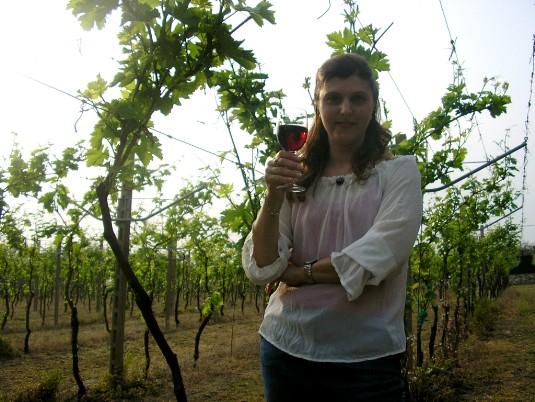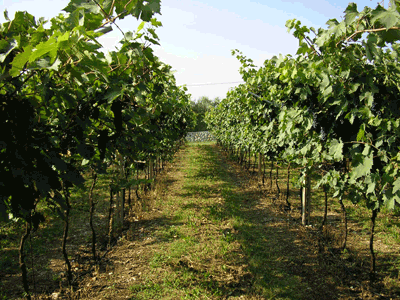HOW WINE IS MADE
About wine production...
Wine is the product of alcoholic fermentation of grape juice due to some yeasts present on the skin of the grapes that turn pulp sugar into ethyl alcohol and carbon dioxide. Depending on the type of grapes and the process used white wines, rosés and reds with different alcohol volume can be produced.
The first phase of the production cycle is the harvest. Until a few decades ago it was a job done entirely by hand; nowadays is mainly performed mechanically with ever evolving technologies that allow the reduction of harvesting time and labour costs.
The grapes are then transported to the cellar for pressing, the second phase of the cycle. It used to be a manual job too: crushing the grapes in large tanks with bare feet. Now, machines are used which, in addition to extract juices, separate the berries from the stalk. The must thus obtained is collected in large tanks ready for the next step.
Fermentation can last from 1 day to 1 week, or even more for complex wines' production. At this stage there is a biochemical process in which the sugar content in the must gradually turns into alcohol and carbon dioxide. The vinification is different in order to get different types of wine. For white wines usually white grapes are used, with juices extracted from the skins of the grapes; however red-berried grapes could also be used which are vinified in white by separating the must from pomace.
For rosé wines, there is a partial white vinification of red-berried grapes, leaving the grapes to macerate briefly with the mash; this allows the wine to acquire a soft colour and a moderate body taste.

The vinification of red wine is obtained by leaving fermenting grape must from red-berries grape, soaking with peels and seeds that typically release the colour red and the tannins.

The last stage of the production is the racking and fining: pouring the wine, purified from the solid residues and mash that remains on the bottom, and further processing and fermenting of residual sugars. At this point, some wines are ready to be bottled and are typically meant to be consumed young. For some red wines begins the aging process which can last from 1 up to 5 years, and allows consumption over a longer period.
The DOC (denomination of controlled origin) is an Italian brand established in 1963 and certifies the area of origin and collection of the grapes. In order to get it the wines produced undergo a preliminary chemical-physical analysis and organoleptic examination certifying compliance with the requirements of the regulations.
The specification of Bardolino DOC dates back to 1968. The additional designation 'classic' is reserved for wines which grapes come from the territories of ancient production and which consists of the following municipalities: Bardolino, Lazise, Garda, Affi, Cavaion Veronese, Costermano. Bardolino is produced with autochthonous grapes, Corvina (percentage 35-80%), Rondinella (10-40%) and Molinara (max. 15%). Other red berries grapes are allowed, provided that do not exceed 20% of the total.
A special mention goes to Bardolino Superiore DOCG (denomination of controlled and guaranteed origin, a brand that Bardolino wine acquires in 2001) that we produce since 2003. A full-bodied wine, aged in barrels, who's given us us great satisfaction and it has been recognised through a number of Certificated Awards.